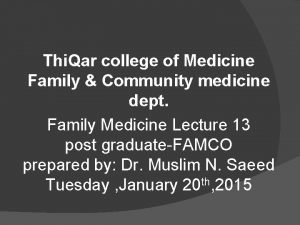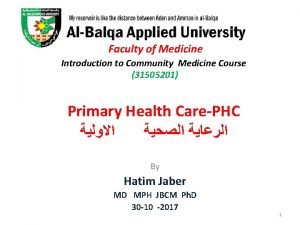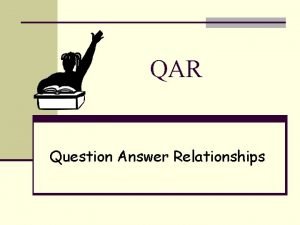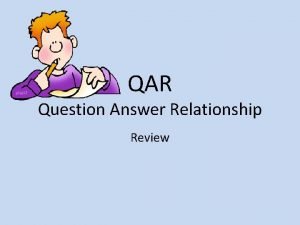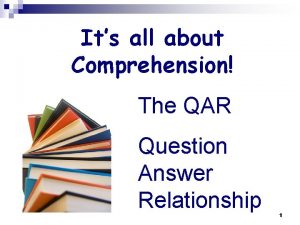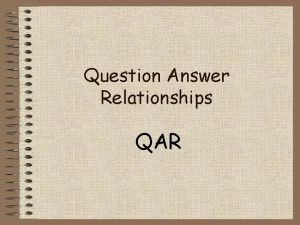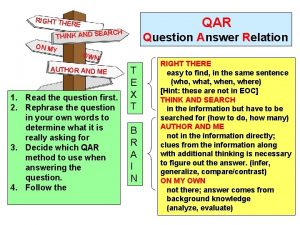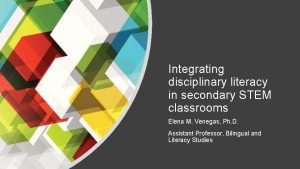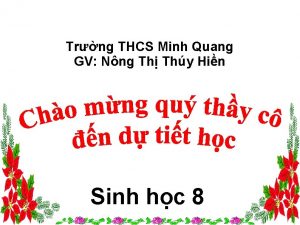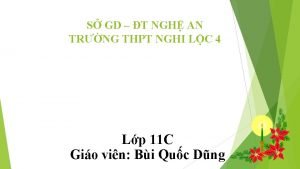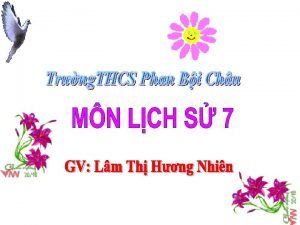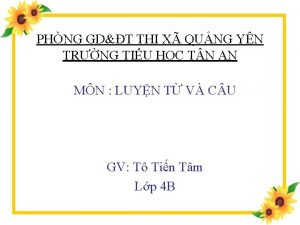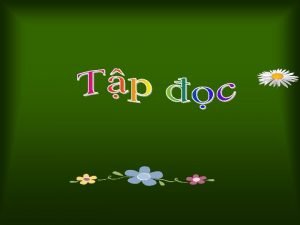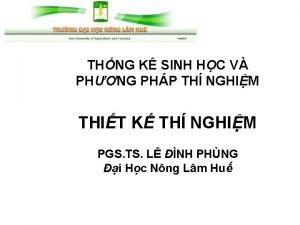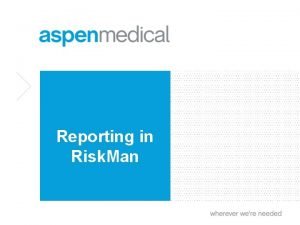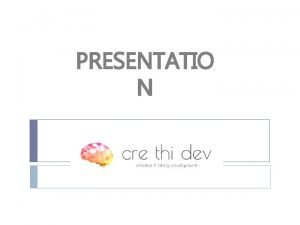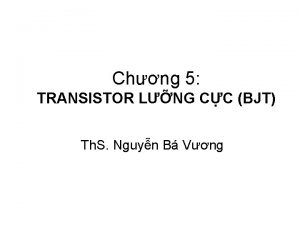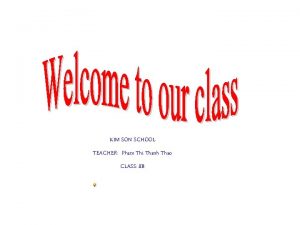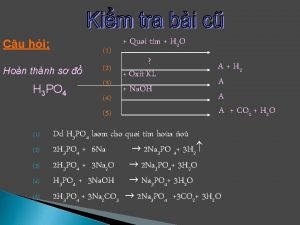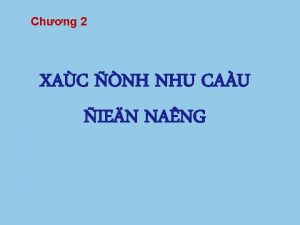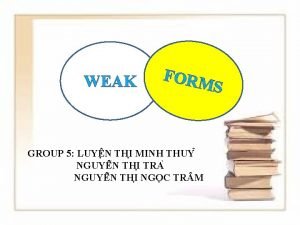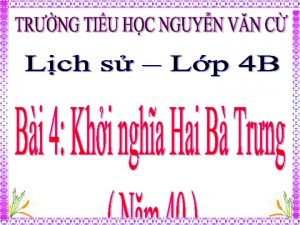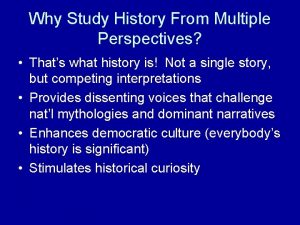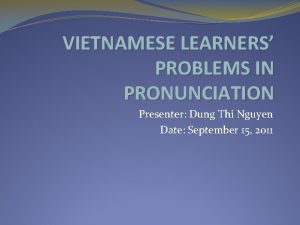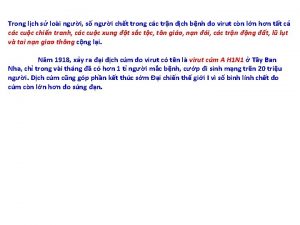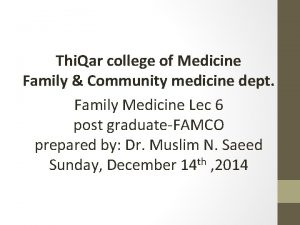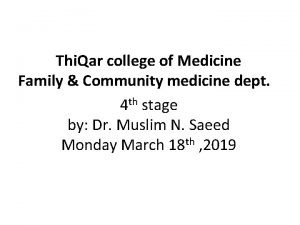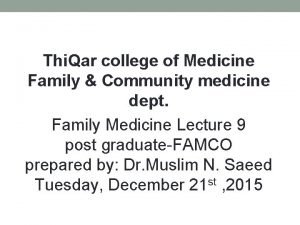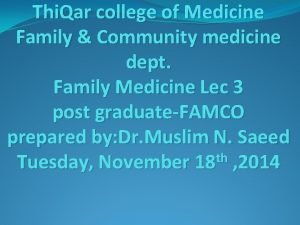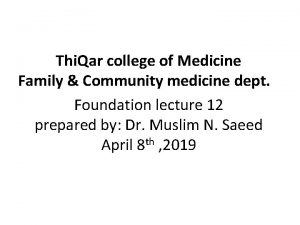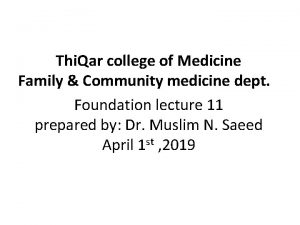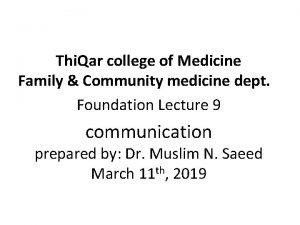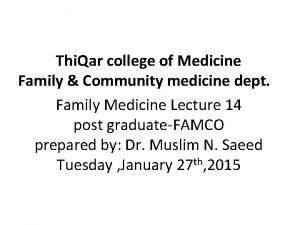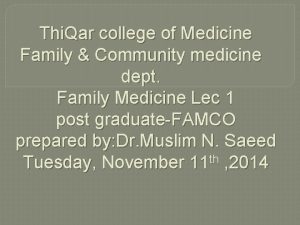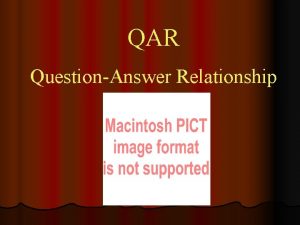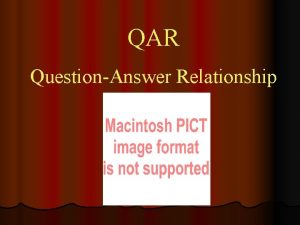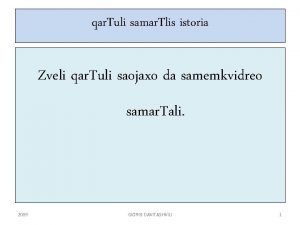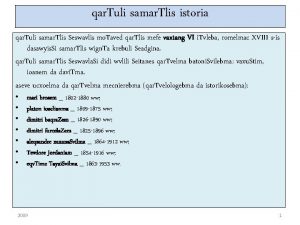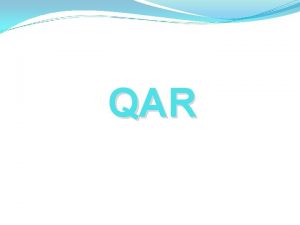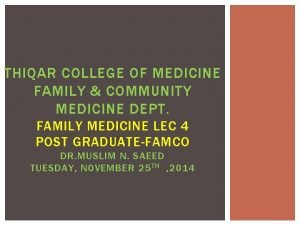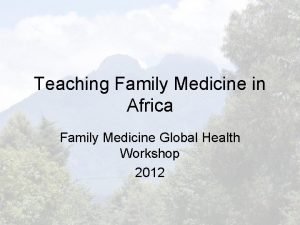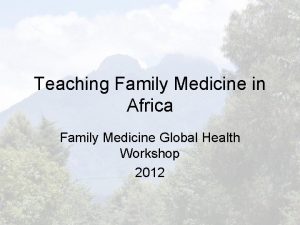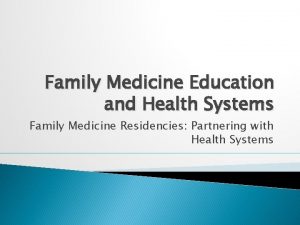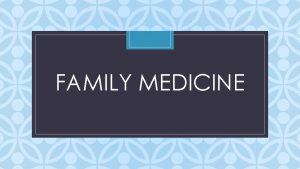Thi Qar college of Medicine Family Community medicine


































- Slides: 34

Thi. Qar college of Medicine Family & Community medicine dept. Family Medicine Lecture 10 post graduate-FAMCO prepared by: Dr. Muslim N. Saeed Sunday, January 4 th, 2015

Evidence Based Medicine

Objectives Formulate an idea about the growing importance of EBM Define the basic EBM relevant terms List the main steps followed in the decision making process which depends on EBM Formulate an idea about the process of teaching and learning EBM

Definitions Evidence-Based Practice (EBP): “An approach to decision making whereby clinicians appraise the scientific evidence and its strength in support of their therapeutic decisions. ” Evidence-Based Medicine (EBM): “An approach to medical practice that uses the result of patient-care research and other available evidence as a guide of clinical decision making

Definitions (cont. ) Evidence-Based Medicine (EBM) is a way of combining the best-available scientific evidence, the practitioner’s clinical judgment, and the patient’s values to make medical decisions. EBM is a collation, modernization, and codification of century-old principles of science, medicine, and probability.

The ideas have been around for a long time. They can be identified with their expression in post-revolutionary Paris (when clinicians like Pierre Louis rejected the pronouncements of authorities and sought the truth in systematic observation of patients), and a some have nominated a much earlier origin in ancient Chinese medicine.

In the current era, these ideas (Modern evidence-based medicine) were pioneered, consolidated, and named EBM in 1992 by Gordon H. Guyatt, R Brian Haynes, David Sackett, and colleagues at Mc. Master University in Canada.

Since then, the number of articles about evidence- based practice has grown exponentially (from 1 publication in 1992 to about a thousand in 1998) and international interest has led to the development of 6 evidence-based journals (published in up to 6 languages) that summarize the most relevant studies for clinical practice and have a combined world-wide circulation of over 175, 000. It has gained rapid acceptance in little more than a decade, due in part to the championship of Drummond Rennie as editor of JAMA in publishing the influential User’s Guide to the Medical Literature series.

-To practice evidence-based medicine, a core set of concepts and techniques must be mastered: At the most basic level, this includes an ability to formulate questions based on patients’ problems, search the literature for answers, study validity, then apply the information to our patients. In its more developed form, EBM requires a set of skills centered on clinical epidemiology. These skills are not the same as those required of a researcher, though the overlap in content is great. Rather, they are the tools for finding, interpreting, and applying the medical literature in a patientcentered manner.

The practice of evidence-based medicine involves the conscientious and judicious use of current best evidence in the health care of individuals and populations. Over the last two decades there have been numerous advances in evidence processing, including the production of streamlined guides to aid in critical appraisal of the literature, evidence-based abstraction services, online and other forms of electronic literature searching, growing numbers of high quality systematic reviews, and frequently updated textbooks in

Over time, by learning and practicing critical appraisal and informatics skills, developing a rational and practical approach to uncertainty, and by incorporating evidence, patient preferences and values into decision making processes, one will likely become a "connoisseur of evidence". That is, a taste for continually assessing the evidence upon which clinical decisions based, and develop a willingness to seek out and choose high quality pre-appraised and secondary sources of evidence from amongst

The subsequent rapid spread of EBM has arisen from 4 realizations: Our daily need for valid information about diagnosis, prognosis, therapy and prevention (up to 5 times per in-patient and twice for every 3 outpatients). The inadequacy of traditional sources for this information because they are out-of-date (textbooks), frequently wrong (experts), ineffective (didactic continuing medical education) or too overwhelming in their volume and too variable in their validity for practical clinical use (medical journals).

The disparity between our diagnostic skills and clinical judgement, which increase with experience, and our up-to-date knowledge and clinical performance, which decline. Our inability to afford more than a few seconds per patient for finding and assimilating this evidence, or to set aside more than half an hour per week for general reading and study.

-To some, evidence-based medicine seems to be the answer to all of health care’s ills. -To others, it is no more than a new name for an old practice. -The discipline is best thought of as a set of tools and methods for finding and applying the best evidence available to patient care. -The volume of journal articles about or embracing EBM has been growing exponentially for a decade. -There are many barriers to the administration of practicing and teaching evidence-based medicine to a non-evidence based medical care system. -Most medical doctors lack access to modern webbased resources like the Cochrane Collaboration.

Evidence-based medicine should be patient-centered. This crucial point is inherent in the conception of EBM presented by its modern pioneers, but seems underappreciated by the critics of EBM. If a patient has cancer and does not want CPR if they suffer a cardiac arrest, then evidence on the efficacy of vasopressin is uncertain. If a patient cannot afford an expensive drug, it is foolish to prescribe it – even if it is the “best” choice based on the scientific evidence. We should use the medical literature and our understanding of clinical epidemiology, along with the judgment gained from experience, to serve our patients’ needs and wishes.

The practice of evidence based medicine can be divided into the following components: Identifying a problem or area of uncertainty Asking a relevant, focused, clinically important question that is answerable Selecting the most likely resources to search Searching, and appraising the evidence found Assessing the clinical importance of the evidence Assessing the clinical applicability of the evidence Acting on and appropriately applying the evidence Assessing the outcomes of your actions Authoring-summarizing and storing records for future reference

EBM in Decision-Making 4 -Step Process Focus: Recognize information needs; convert them into Search: Conduct efficient searches for the best evidence with which to answer these questions 4 -Step Process Validity and Relevance: Critically appraise the evidence for these qualities Application: Apply the results to patient situations to best assist in clinical decision-making

Asking Answerable Questions The question should be Clear, unambiguous, and structured The inability to ask a focused and precise clinical question can be a major impediment to evidence-based practice.

Unstructured Question Is tonsillectomy effective? For what? For whom? Compared to what? What is meant by “effective”?

Structured Question population Do children aged 2 to 8 years with histories of exposure recurrent streptococcal pharyngitis have fewer outcome episodes of symptomatic pharyngitis after intervention tonsillectomy than those treated with antibiotics? design

Clarify clinical questions and consider best potential sources of evidence doing by the following: v. Ask: "Is this a question about foreground or background knowledge? "

a. Background knowledge questions are general questions about conditions, illnesses, syndromes and patterns of disease, and pathophysiology. They are usually composed of a question root (what, where, why, when, how) + a verb + a condition. For example, "What is the typical clinical presentation of Addison's disease? " A novice more commonly asks this type of question in a particular knowledge area, in order to gain a general understanding of clinical issues. Best resources include evidence based textbooks

b. Foreground questions are more often about issues of care. They query specialized and distinct knowledge needed for specific and relevant clinical decision-making. Components of a well-built foreground question include "PICO". Best resources may include an evidence-based abstraction service, guidelines, systematic reviews, or some evidence-linked textbooks, but may also include the primary literature. The need for skills in searching and critical appraisal is greatest when searching for evidence in the primary literature.

-Pay attention to the question's component parts, especially foreground questions. A useful mnemonic is "PICO": v. P patients or populations v. I interventions v. C comparison group(s) or "gold standard" v. O outcome(s) of interest -Classify the question into a domain: a. Therapy b. Diagnosis c. Prognosis d. Harm or Causality - Ask: "How likely is it that there are high quality summaries or studies with valid and clinically important evidence specifically addressing this issue? "

Focus examples: Initial Question: Should hormone replacement therapy (HRT) be prescribed for this postmenopausal woman? Rephrased: Should we begin HRT (intervention compared with no intervention) to prevent osteoporosis in this symptomatic postmenopausal with a family history of coronary artery disease? Initial Question: Can ranitidine cause thrombocytopenia? Rephrased: Is ranitidine the cause of thrombocytopenia (outcome) in this man with glioblastoma multiforme (patient) who has had a

Origin of Clinical Questions Clinical evidence: how to gather clinical findings properly and interpret them soundly Diagnosis: how to select and interpret diagnostic tests Prognosis: how to anticipate the patient’s likely course Therapy: how to select treatments that do more good than harm Prevention: how to screen and reduce the risk for disease Education: how to teach yourself, the patient, and the family what is needed

Searching Effectively Sources of information and evidence may include: Colleagues Textbooks Journal articles Guidelines

Search • Four options to identify the best evidence to answer a wellframed question a) Ask a colleague for his/ her expert opinion -Pros Quick Easy • Limiting of resources • Quality of colleagues’ opinion – Out of date? Biased? b) Review practice based guidelines (evidence-based or expert opinion based). -Pros • Often electronic: accessible, up-to-date • EB based on objective data • Cost – paid subscription

c) Consult electronic databases of systematic reviews and/ or meta-analyses Characteristics 1. Comprehensive, reproducible data search 2. Improve generalizeability 3. Compares multiple studies 4. Meta-analysis 5. Increases sample size

d) Conduct a literature search using an electronic database (e. g. , Ovid Medline, Cochrane Reviews or Pubmed) Characteristics: 1. Evaluate the primary literature yourself 2. Searches the primary literature by Me. SH (Medical Subject Heading) term 3. Assigned by etiology, prognosis, diagnosis, or therapy 4. Definition: National Library of Medicine’s vocabulary for indexing articles 5. Consistent way of retrieving information 6. Me. SH term example

Where to start searching depends on a number of factors: Available time Available databases PICO and domain of the question asked Foreground versus background knowledge required How well the issue lends itself to study

Information Overload 20, 000 biomedical periodicals 6, 000 articles published annually 17, 000 biomedical books annually 30, 000 recognized diseases 15, 000 therapeutic agents (250/ yr) MEDLINE 4, 000 journals surveyed 11, 000 citations 1. 27 million articles related to oncology 35, 000 articles related to ear, nose, or throat surgery

Medline Search on Structured Question Tonsillectomy 4, 597 Streptococcus 51, 009 Human, age 1, 751 Pharyngitis 1, 652 Pharyngitis 46 Human, age 551 GABH strep 2 Tonsillectomy 2

Thank you
 Types of family in community medicine
Types of family in community medicine Types of family in community medicine
Types of family in community medicine Duke family medicine and community health
Duke family medicine and community health What are right there questions
What are right there questions What is a right there question
What is a right there question Qar examples
Qar examples Qar test
Qar test Qış baba şeiri
Qış baba şeiri Qar visuals
Qar visuals Qar visuals
Qar visuals Tế bào thụ cảm thị giác
Tế bào thụ cảm thị giác Một học sinh cận thị có các điểm cc cv
Một học sinh cận thị có các điểm cc cv Bé thì chăn nghé chăn trâu
Bé thì chăn nghé chăn trâu Bớt đầu thì bé nhất nhà
Bớt đầu thì bé nhất nhà Mode địa chỉ tức thì là mode
Mode địa chỉ tức thì là mode Nguyễn thị cẩm châu
Nguyễn thị cẩm châu Các kiểu bố trí thí nghiệm 2 nhân to
Các kiểu bố trí thí nghiệm 2 nhân to What is riskman
What is riskman Creative thi
Creative thi Vẽ đồ thị họ đặc tuyến ra ic
Vẽ đồ thị họ đặc tuyến ra ic Thuy ha
Thuy ha Pham thi thanh thao
Pham thi thanh thao Muối đihiđrophotphat
Muối đihiđrophotphat đồ thị phụ tải
đồ thị phụ tải Nguyễn thị diễm my
Nguyễn thị diễm my Thực hành một số thí nghiệm về enzim
Thực hành một số thí nghiệm về enzim Dinh thi lan
Dinh thi lan Strong and weak forms exercises
Strong and weak forms exercises Lan nguyen thi
Lan nguyen thi Phan thị nga
Phan thị nga Bắc bộ
Bắc bộ Tran thi gung
Tran thi gung Cont'd pronunciation
Cont'd pronunciation Thí nghiệm phát hiện virus của ivanopxki
Thí nghiệm phát hiện virus của ivanopxki What is he doing
What is he doing
